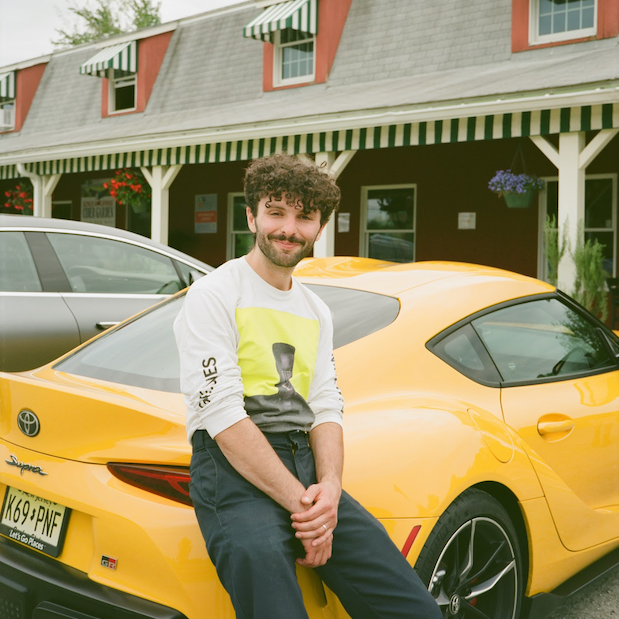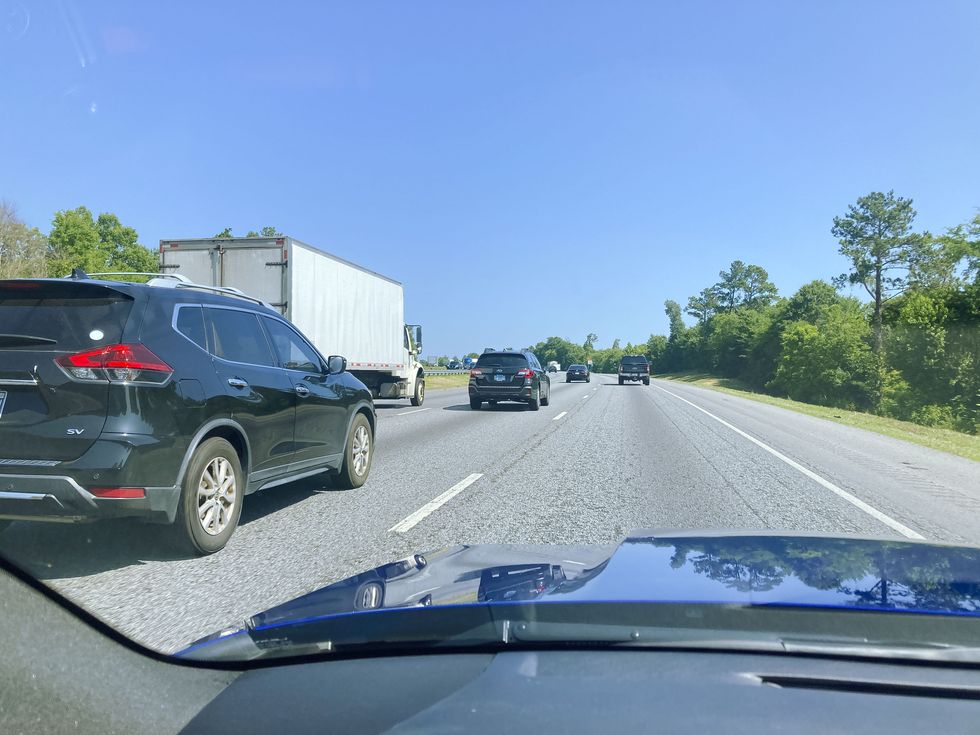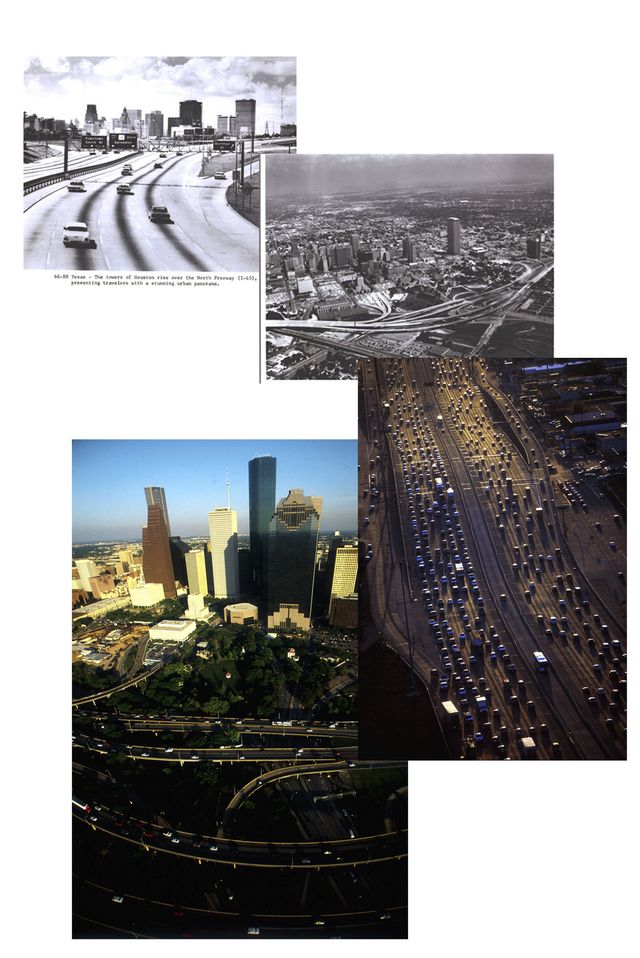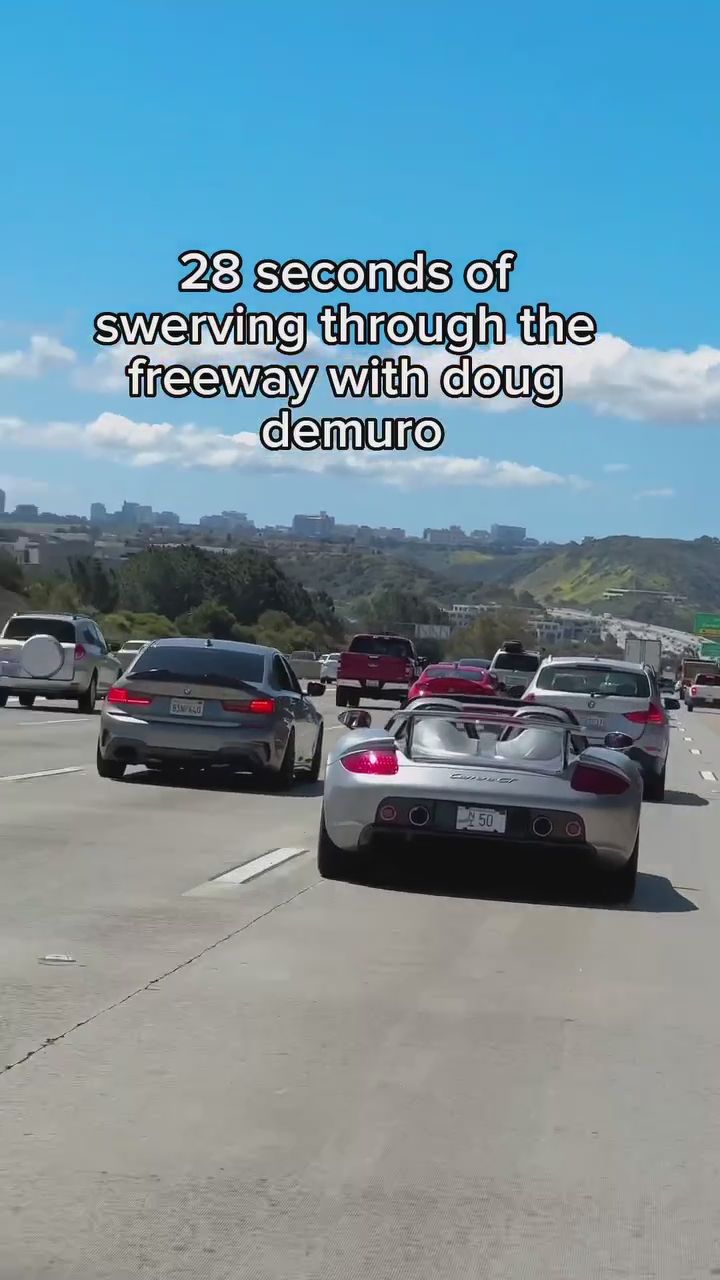It was 2000 miles on my agenda, to drive from Atlanta to Nashville to deep in the North Carolina mountains and back again, twice. It was a lot of driving. It would take a long time, a situation aggrieved at every opportunity by my fellow Americans’ desperate insistence on driving at two miles per hour over the legal limit in the far left lane.
The drama that presents itself on American highways is immediately apparent on any wide stretch of three-, four-, five-, or six-lane interstate. There is no set “fast” lane. There is no “overtaking” lane. There are simply a bunch of lanes, and everyone is going whatever the hell speed in whatever the hell lane is generally open. The fastest drivers are probably in the next-to-rightmost lane, or all the way over to the right, undertaking someone who simply does not care, or was too busy texting to notice.
This hits two key subjects, one of which is reasonably academic, the other a bit more practical.
The academic: induced demand, or as the fine researchers at the University of California, Davis’ National Center for Sustainable Travel put it, “induced travel.” It is a simple premise. If you add more lanes to a highway, more people take that highway:
Attempts to address traffic congestion commonly rely on increasing roadway capacity, e.g. by building new roadways or adding lanes to existing facilities. But studies examining that approach indicate it is only a temporary fix. They consistently show that adding roadway capacity actually increases network-wide vehicle miles traveled (VMT) by a nearly equivalent proportion within a few years, reducing or negating any initial congestion relief. That increase in VMT is called “induced travel.”
UC Davis has a handy equation for calculating induced travel if you happen to be a Department of Transportation employee reading this column right now.
Now, the principle of induced travel is not a new one—people have published academic papers on it here in the States since 1962. These papers stated that if you have an old highway jammed full of cars and you build a new one that’s empty, pretty soon the two highways reach equilibrium, assuming the total number of cars and drivers and trips stay the same.
That’s a big set of assumptions, so I do love this 1991 paper that concludes rather tidily, “once these assumptions are replaced with the empirical facts of both increasing numbers of commuters and increasing numbers of owned vehicles over time, there exists only one dynamically stable equilibrium and one dynamically unstable equilibrium. The unstable equilibrium will eventually result in gridlock.”
Now for the practical. I’ll take this whole argument a step further. Even if adding more lanes could theoretically reduce traffic, Americans don’t deserve them. We just can’t handle them! Give me a three-lane divided highway and a 70 mph limit and I’ll show you a driver in the far left doing 72, a driver to their right doing 71, and some maniac tearing out their hair passing them both at 80 in the empty slow lane.
I don’t love to say that this train of thought kicked off in my brain a few months ago when we published this video of somebody in a BMW chasing the internet’s beloved car son Doug DeMuro through traffic, trying to get close to his Porsche Carrera GT. It was clearly unsafe—both drivers weaving through traffic on a seven-lane freeway in California, Doug trying to get away from the person filming him, the other car chasing to catch up. As Doug commented at the time, “This video is such a great example of what happens every single time I drive my sports cars—I get followed insanely closely by people (that BMW) who won’t leave me alone and want to race or ‘hang with’ a Carrera GT or Ford GT. I try to get away from them, but they refuse to back off. It’s so dangerous and annoying!!!!”
It bothered me not explicitly because a guy was chasing Doug, who has been nothing but a sweet and kind person to me, personally, in all the years I have worked with or interacted with him. It bothered me because this was a seven-lane highway and Doug still had to weave in and out of lanes like he was playing Frogger to get away. There was no open fast lane! Even the HOV lane was clogged. There was plenty of room for slower drivers to move right and clear a lane to overtake, but everyone was just generally doing the same speed, regardless of lane. That’s with seven lanes to work with! I’ve seen the same situation play out with six, five, four, three, even two lanes. I’ve undertaken with two.
The sensible thing is for us to just take away the lanes that Americans don’t know what to do with. Bring all highways down to one single lane. I don’t think my 2000-mile loop-de-loop across Georgia, Tennessee, and North Carolina would have been any slower that way, not with the total lack of lane discipline I faced anyhow. We learn to pull out safely to pass, and we move on. Only once we prove we can handle that lone lane should we be entitled to another.

Deputy Editor
Road & Track’s Deputy Editor who once got a Dakar-winning race truck stuck in a sand dune, and rolled a Baja Bug off an icy New York road, and went flying off Mount Washington in a Nissan 240SX rally car, and…
It was 2000 miles on my agenda, to drive from Atlanta to Nashville to deep in the North Carolina mountains and back again, twice. It was a lot of driving. It would take a long time, a situation aggrieved at every opportunity by my fellow Americans’ desperate insistence on driving at two miles per hour over the legal limit in the far left lane.
The drama that presents itself on American highways is immediately apparent on any wide stretch of three-, four-, five-, or six-lane interstate. There is no set “fast” lane. There is no “overtaking” lane. There are simply a bunch of lanes, and everyone is going whatever the hell speed in whatever the hell lane is generally open. The fastest drivers are probably in the next-to-rightmost lane, or all the way over to the right, undertaking someone who simply does not care, or was too busy texting to notice.
This hits two key subjects, one of which is reasonably academic, the other a bit more practical.
The academic: induced demand, or as the fine researchers at the University of California, Davis’ National Center for Sustainable Travel put it, “induced travel.” It is a simple premise. If you add more lanes to a highway, more people take that highway:
Attempts to address traffic congestion commonly rely on increasing roadway capacity, e.g. by building new roadways or adding lanes to existing facilities. But studies examining that approach indicate it is only a temporary fix. They consistently show that adding roadway capacity actually increases network-wide vehicle miles traveled (VMT) by a nearly equivalent proportion within a few years, reducing or negating any initial congestion relief. That increase in VMT is called “induced travel.”
UC Davis has a handy equation for calculating induced travel if you happen to be a Department of Transportation employee reading this column right now.
Now, the principle of induced travel is not a new one—people have published academic papers on it here in the States since 1962. These papers stated that if you have an old highway jammed full of cars and you build a new one that’s empty, pretty soon the two highways reach equilibrium, assuming the total number of cars and drivers and trips stay the same.
That’s a big set of assumptions, so I do love this 1991 paper that concludes rather tidily, “once these assumptions are replaced with the empirical facts of both increasing numbers of commuters and increasing numbers of owned vehicles over time, there exists only one dynamically stable equilibrium and one dynamically unstable equilibrium. The unstable equilibrium will eventually result in gridlock.”
Now for the practical. I’ll take this whole argument a step further. Even if adding more lanes could theoretically reduce traffic, Americans don’t deserve them. We just can’t handle them! Give me a three-lane divided highway and a 70 mph limit and I’ll show you a driver in the far left doing 72, a driver to their right doing 71, and some maniac tearing out their hair passing them both at 80 in the empty slow lane.
I don’t love to say that this train of thought kicked off in my brain a few months ago when we published this video of somebody in a BMW chasing the internet’s beloved car son Doug DeMuro through traffic, trying to get close to his Porsche Carrera GT. It was clearly unsafe—both drivers weaving through traffic on a seven-lane freeway in California, Doug trying to get away from the person filming him, the other car chasing to catch up. As Doug commented at the time, “This video is such a great example of what happens every single time I drive my sports cars—I get followed insanely closely by people (that BMW) who won’t leave me alone and want to race or ‘hang with’ a Carrera GT or Ford GT. I try to get away from them, but they refuse to back off. It’s so dangerous and annoying!!!!”
It bothered me not explicitly because a guy was chasing Doug, who has been nothing but a sweet and kind person to me, personally, in all the years I have worked with or interacted with him. It bothered me because this was a seven-lane highway and Doug still had to weave in and out of lanes like he was playing Frogger to get away. There was no open fast lane! Even the HOV lane was clogged. There was plenty of room for slower drivers to move right and clear a lane to overtake, but everyone was just generally doing the same speed, regardless of lane. That’s with seven lanes to work with! I’ve seen the same situation play out with six, five, four, three, even two lanes. I’ve undertaken with two.
The sensible thing is for us to just take away the lanes that Americans don’t know what to do with. Bring all highways down to one single lane. I don’t think my 2000-mile loop-de-loop across Georgia, Tennessee, and North Carolina would have been any slower that way, not with the total lack of lane discipline I faced anyhow. We learn to pull out safely to pass, and we move on. Only once we prove we can handle that lone lane should we be entitled to another.

Deputy Editor
Road & Track’s Deputy Editor who once got a Dakar-winning race truck stuck in a sand dune, and rolled a Baja Bug off an icy New York road, and went flying off Mount Washington in a Nissan 240SX rally car, and…
It was 2000 miles on my agenda, to drive from Atlanta to Nashville to deep in the North Carolina mountains and back again, twice. It was a lot of driving. It would take a long time, a situation aggrieved at every opportunity by my fellow Americans’ desperate insistence on driving at two miles per hour over the legal limit in the far left lane.
The drama that presents itself on American highways is immediately apparent on any wide stretch of three-, four-, five-, or six-lane interstate. There is no set “fast” lane. There is no “overtaking” lane. There are simply a bunch of lanes, and everyone is going whatever the hell speed in whatever the hell lane is generally open. The fastest drivers are probably in the next-to-rightmost lane, or all the way over to the right, undertaking someone who simply does not care, or was too busy texting to notice.
This hits two key subjects, one of which is reasonably academic, the other a bit more practical.
The academic: induced demand, or as the fine researchers at the University of California, Davis’ National Center for Sustainable Travel put it, “induced travel.” It is a simple premise. If you add more lanes to a highway, more people take that highway:
Attempts to address traffic congestion commonly rely on increasing roadway capacity, e.g. by building new roadways or adding lanes to existing facilities. But studies examining that approach indicate it is only a temporary fix. They consistently show that adding roadway capacity actually increases network-wide vehicle miles traveled (VMT) by a nearly equivalent proportion within a few years, reducing or negating any initial congestion relief. That increase in VMT is called “induced travel.”
UC Davis has a handy equation for calculating induced travel if you happen to be a Department of Transportation employee reading this column right now.
Now, the principle of induced travel is not a new one—people have published academic papers on it here in the States since 1962. These papers stated that if you have an old highway jammed full of cars and you build a new one that’s empty, pretty soon the two highways reach equilibrium, assuming the total number of cars and drivers and trips stay the same.
That’s a big set of assumptions, so I do love this 1991 paper that concludes rather tidily, “once these assumptions are replaced with the empirical facts of both increasing numbers of commuters and increasing numbers of owned vehicles over time, there exists only one dynamically stable equilibrium and one dynamically unstable equilibrium. The unstable equilibrium will eventually result in gridlock.”
Now for the practical. I’ll take this whole argument a step further. Even if adding more lanes could theoretically reduce traffic, Americans don’t deserve them. We just can’t handle them! Give me a three-lane divided highway and a 70 mph limit and I’ll show you a driver in the far left doing 72, a driver to their right doing 71, and some maniac tearing out their hair passing them both at 80 in the empty slow lane.
I don’t love to say that this train of thought kicked off in my brain a few months ago when we published this video of somebody in a BMW chasing the internet’s beloved car son Doug DeMuro through traffic, trying to get close to his Porsche Carrera GT. It was clearly unsafe—both drivers weaving through traffic on a seven-lane freeway in California, Doug trying to get away from the person filming him, the other car chasing to catch up. As Doug commented at the time, “This video is such a great example of what happens every single time I drive my sports cars—I get followed insanely closely by people (that BMW) who won’t leave me alone and want to race or ‘hang with’ a Carrera GT or Ford GT. I try to get away from them, but they refuse to back off. It’s so dangerous and annoying!!!!”
It bothered me not explicitly because a guy was chasing Doug, who has been nothing but a sweet and kind person to me, personally, in all the years I have worked with or interacted with him. It bothered me because this was a seven-lane highway and Doug still had to weave in and out of lanes like he was playing Frogger to get away. There was no open fast lane! Even the HOV lane was clogged. There was plenty of room for slower drivers to move right and clear a lane to overtake, but everyone was just generally doing the same speed, regardless of lane. That’s with seven lanes to work with! I’ve seen the same situation play out with six, five, four, three, even two lanes. I’ve undertaken with two.
The sensible thing is for us to just take away the lanes that Americans don’t know what to do with. Bring all highways down to one single lane. I don’t think my 2000-mile loop-de-loop across Georgia, Tennessee, and North Carolina would have been any slower that way, not with the total lack of lane discipline I faced anyhow. We learn to pull out safely to pass, and we move on. Only once we prove we can handle that lone lane should we be entitled to another.

Deputy Editor
Road & Track’s Deputy Editor who once got a Dakar-winning race truck stuck in a sand dune, and rolled a Baja Bug off an icy New York road, and went flying off Mount Washington in a Nissan 240SX rally car, and…
It was 2000 miles on my agenda, to drive from Atlanta to Nashville to deep in the North Carolina mountains and back again, twice. It was a lot of driving. It would take a long time, a situation aggrieved at every opportunity by my fellow Americans’ desperate insistence on driving at two miles per hour over the legal limit in the far left lane.
The drama that presents itself on American highways is immediately apparent on any wide stretch of three-, four-, five-, or six-lane interstate. There is no set “fast” lane. There is no “overtaking” lane. There are simply a bunch of lanes, and everyone is going whatever the hell speed in whatever the hell lane is generally open. The fastest drivers are probably in the next-to-rightmost lane, or all the way over to the right, undertaking someone who simply does not care, or was too busy texting to notice.
This hits two key subjects, one of which is reasonably academic, the other a bit more practical.
The academic: induced demand, or as the fine researchers at the University of California, Davis’ National Center for Sustainable Travel put it, “induced travel.” It is a simple premise. If you add more lanes to a highway, more people take that highway:
Attempts to address traffic congestion commonly rely on increasing roadway capacity, e.g. by building new roadways or adding lanes to existing facilities. But studies examining that approach indicate it is only a temporary fix. They consistently show that adding roadway capacity actually increases network-wide vehicle miles traveled (VMT) by a nearly equivalent proportion within a few years, reducing or negating any initial congestion relief. That increase in VMT is called “induced travel.”
UC Davis has a handy equation for calculating induced travel if you happen to be a Department of Transportation employee reading this column right now.
Now, the principle of induced travel is not a new one—people have published academic papers on it here in the States since 1962. These papers stated that if you have an old highway jammed full of cars and you build a new one that’s empty, pretty soon the two highways reach equilibrium, assuming the total number of cars and drivers and trips stay the same.
That’s a big set of assumptions, so I do love this 1991 paper that concludes rather tidily, “once these assumptions are replaced with the empirical facts of both increasing numbers of commuters and increasing numbers of owned vehicles over time, there exists only one dynamically stable equilibrium and one dynamically unstable equilibrium. The unstable equilibrium will eventually result in gridlock.”
Now for the practical. I’ll take this whole argument a step further. Even if adding more lanes could theoretically reduce traffic, Americans don’t deserve them. We just can’t handle them! Give me a three-lane divided highway and a 70 mph limit and I’ll show you a driver in the far left doing 72, a driver to their right doing 71, and some maniac tearing out their hair passing them both at 80 in the empty slow lane.
I don’t love to say that this train of thought kicked off in my brain a few months ago when we published this video of somebody in a BMW chasing the internet’s beloved car son Doug DeMuro through traffic, trying to get close to his Porsche Carrera GT. It was clearly unsafe—both drivers weaving through traffic on a seven-lane freeway in California, Doug trying to get away from the person filming him, the other car chasing to catch up. As Doug commented at the time, “This video is such a great example of what happens every single time I drive my sports cars—I get followed insanely closely by people (that BMW) who won’t leave me alone and want to race or ‘hang with’ a Carrera GT or Ford GT. I try to get away from them, but they refuse to back off. It’s so dangerous and annoying!!!!”
It bothered me not explicitly because a guy was chasing Doug, who has been nothing but a sweet and kind person to me, personally, in all the years I have worked with or interacted with him. It bothered me because this was a seven-lane highway and Doug still had to weave in and out of lanes like he was playing Frogger to get away. There was no open fast lane! Even the HOV lane was clogged. There was plenty of room for slower drivers to move right and clear a lane to overtake, but everyone was just generally doing the same speed, regardless of lane. That’s with seven lanes to work with! I’ve seen the same situation play out with six, five, four, three, even two lanes. I’ve undertaken with two.
The sensible thing is for us to just take away the lanes that Americans don’t know what to do with. Bring all highways down to one single lane. I don’t think my 2000-mile loop-de-loop across Georgia, Tennessee, and North Carolina would have been any slower that way, not with the total lack of lane discipline I faced anyhow. We learn to pull out safely to pass, and we move on. Only once we prove we can handle that lone lane should we be entitled to another.

Deputy Editor
Road & Track’s Deputy Editor who once got a Dakar-winning race truck stuck in a sand dune, and rolled a Baja Bug off an icy New York road, and went flying off Mount Washington in a Nissan 240SX rally car, and…


















